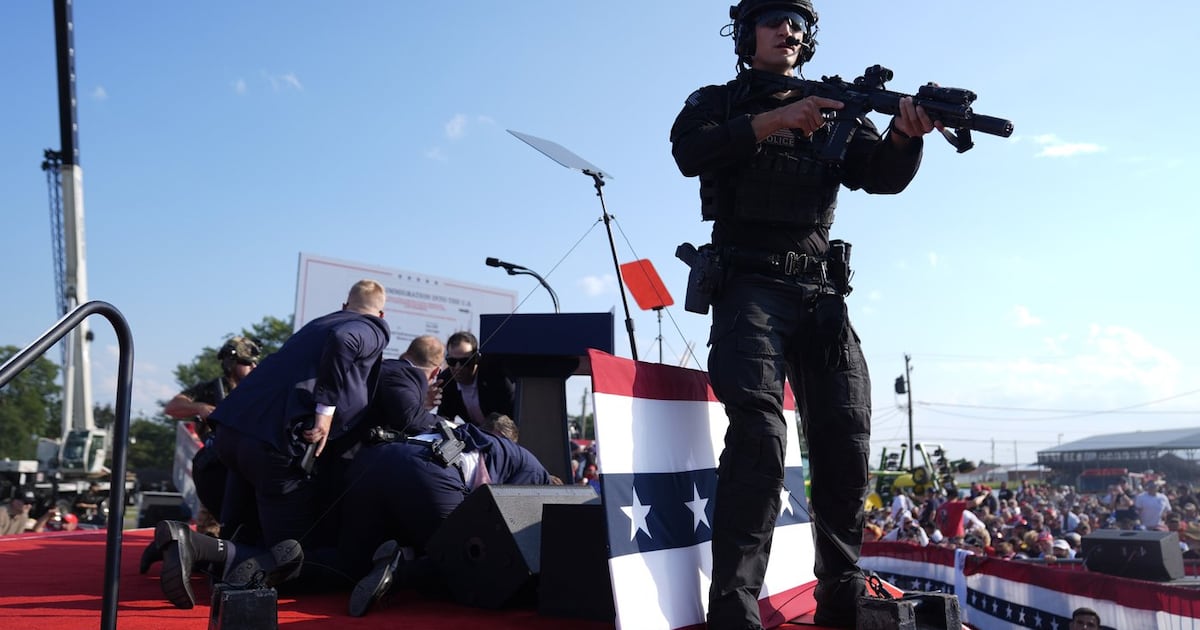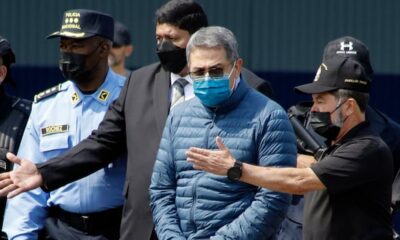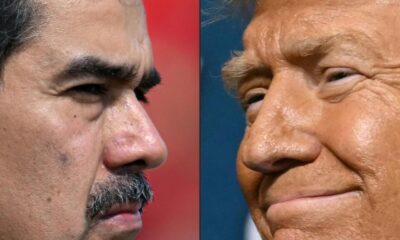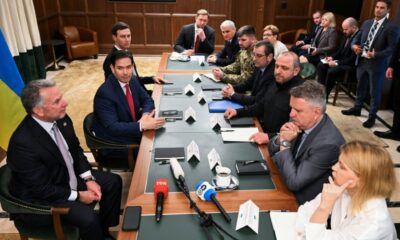Top Stories
Secret Service Faces Scrutiny One Year After Trump Assassination Attempt

A year after the assassination attempt on Donald Trump during a campaign event in Butler, Pennsylvania, the U.S. Secret Service has undergone significant changes in response to failures that allowed a 20-year-old man, Michael Thomas Crooks, to fire eight shots at the former president. The attack left one attendee dead and two others injured, while a bullet grazed Trump’s ear before a Secret Service counter sniper fatally shot Crooks. This incident not only shocked the nation but also raised serious questions about the agency’s preparedness and effectiveness in protecting the president.
Investigations into the shooting have revealed critical breakdowns in security planning. A nearby rooftop, which provided a clear line of sight to the stage where Trump was speaking, was left unguarded, despite being only 135 meters (approximately 157 yards) away. The Secret Service later acknowledged that while personnel were aware of the risks, they deemed them “acceptable.” Supervisors had anticipated that large farm equipment would obstruct the view, but this was not the case. Staff who assessed the site before the rally failed to communicate the unresolved line-of-sight concerns to their superiors.
Another major issue was the disjointed communication between the Secret Service and local law enforcement, essential partners in securing events. Investigations indicated that there were two separate command posts at the rally, resulting in a “chaotic mixture” of communication methods, including radio, cell phone, text, and email. This lack of cohesion hampered the agency’s ability to respond effectively.
In a recent report, Sean Curran, the current director of the Secret Service, stated, “Since President Trump appointed me as director of the United States Secret Service, I have kept my experience on July 13 top of mind, and the agency has taken many steps to ensure such an event can never be repeated in the future.” Curran was present during the shooting and has since led initiatives to address the shortcomings identified in the investigations.
The Secret Service has implemented 21 of the 46 recommendations made by Congressional oversight committees. These changes include acquiring new equipment, enhancing aerial threat assessments with the creation of a new Aviation Division, and increasing operational readiness with the addition of armored ATVs for use on golf courses. Furthermore, the agency is investing in mobile command vehicles that will be strategically positioned across the country.
Policy updates have also been a focus. The Secret Service has revised its operational manual to improve procedures and communication when coordinating with local law enforcement. They have also established clearer guidelines for addressing line-of-sight issues. Despite these measures, there has been limited accountability for those involved in the security failures. While the agency’s director at the time, Kim Cheatle, quickly resigned, only six staff members faced disciplinary actions, receiving suspensions ranging from 10 to 42 days without pay.
The motivations behind Crooks’ actions remain largely unexplained. Killed by a Secret Service sniper, he left behind little information about his intentions. Investigators have not uncovered any ideological motivations or threatening statements on social media that could shed light on his actions. This lack of clarity has left many unanswered questions about how such significant security oversights occurred.
Retired supervisory agent Bobby McDonald, who now teaches criminal justice, described the incident as a “wake-up call for the Secret Service.” He expressed concern over the agency’s perceived complacency, stating, “Communication and complacency are the two issues that really went wrong in Butler.” McDonald emphasized that the protection required for Trump differs from that of other former presidents, suggesting that the agency may have underestimated the challenges involved.
The widow of Corey Comperatore, who was killed during the assassination attempt, echoed these concerns in a recent interview. Helen Comperatore expressed her frustration with the apparent lapses in security, questioning why the rooftop was left unmonitored. “Why was that such a failure? Why weren’t they paying attention?” she asked, seeking a dialogue with agency officials to understand their decision-making process.
As the anniversary of the Butler incident approaches, the Secret Service continues to face scrutiny over its effectiveness and accountability. While efforts to improve security measures and operational protocols are underway, many observers remain concerned that fundamental issues within the agency persist. The path ahead will be closely watched as the agency strives to regain public trust and ensure the safety of those it is sworn to protect.
-

 Politics4 weeks ago
Politics4 weeks agoSecwepemc First Nation Seeks Aboriginal Title Over Kamloops Area
-

 World5 months ago
World5 months agoScientists Unearth Ancient Antarctic Ice to Unlock Climate Secrets
-

 Entertainment5 months ago
Entertainment5 months agoTrump and McCormick to Announce $70 Billion Energy Investments
-

 Science5 months ago
Science5 months agoFour Astronauts Return to Earth After International Space Station Mission
-

 Lifestyle5 months ago
Lifestyle5 months agoTransLink Launches Food Truck Program to Boost Revenue in Vancouver
-

 Technology3 months ago
Technology3 months agoApple Notes Enhances Functionality with Markdown Support in macOS 26
-

 Lifestyle3 months ago
Lifestyle3 months agoManitoba’s Burger Champion Shines Again Amid Dining Innovations
-

 Top Stories2 months ago
Top Stories2 months agoUrgent Update: Fatal Crash on Highway 99 Claims Life of Pitt Meadows Man
-

 Politics4 months ago
Politics4 months agoUkrainian Tennis Star Elina Svitolina Faces Death Threats Online
-

 Sports5 months ago
Sports5 months agoSearch Underway for Missing Hunter Amid Hokkaido Bear Emergency
-

 Politics5 months ago
Politics5 months agoCarney Engages First Nations Leaders at Development Law Summit
-

 Technology5 months ago
Technology5 months agoFrosthaven Launches Early Access on July 31, 2025





















